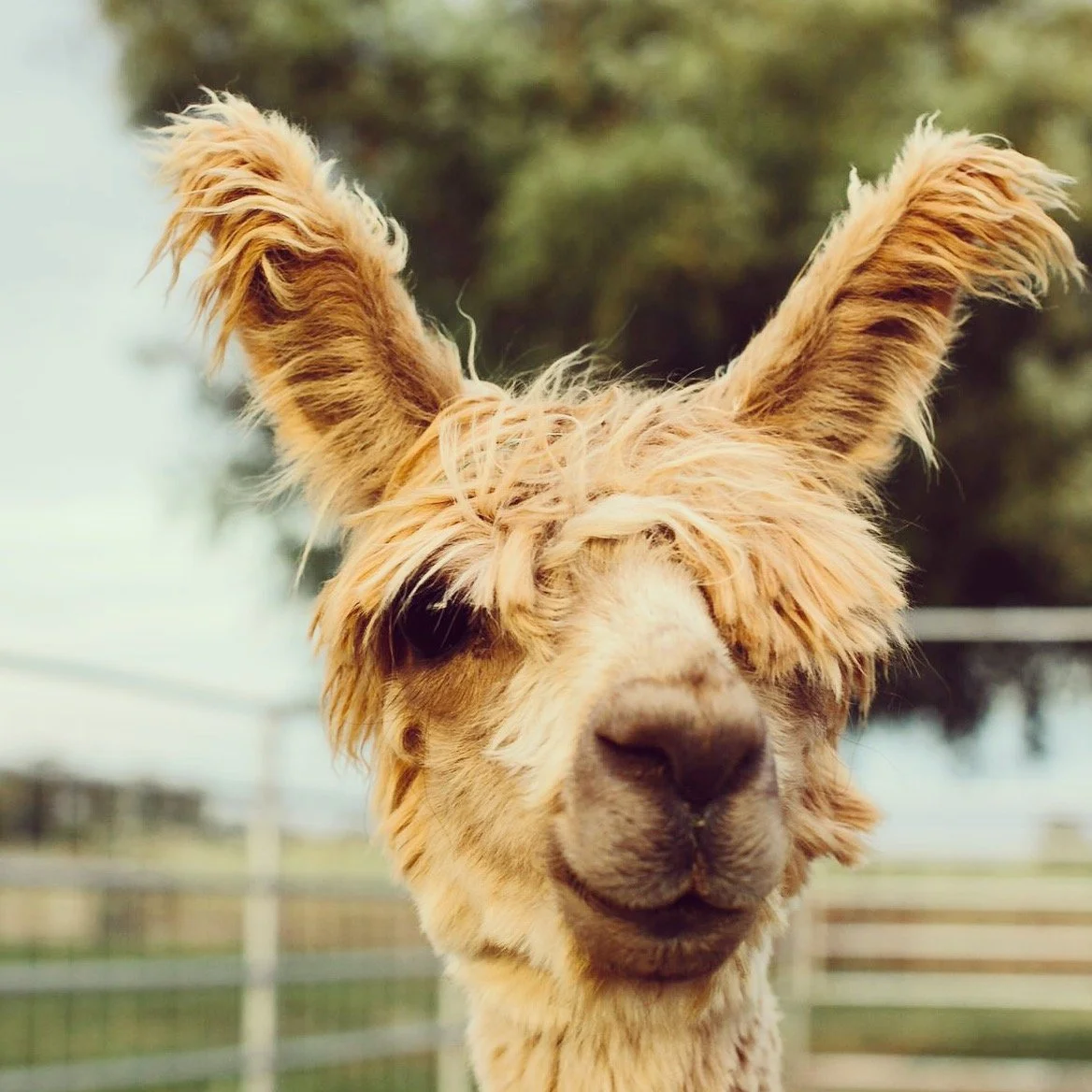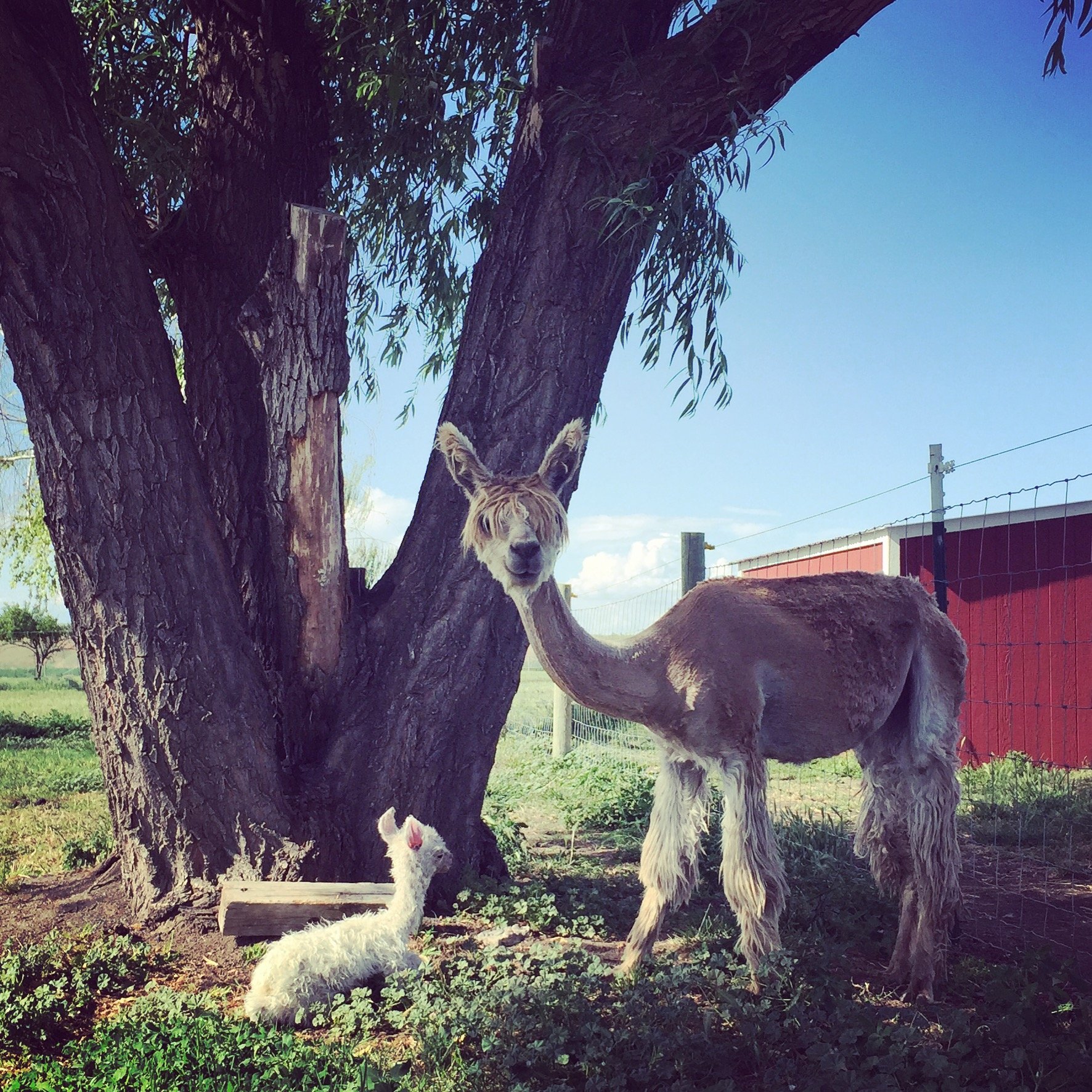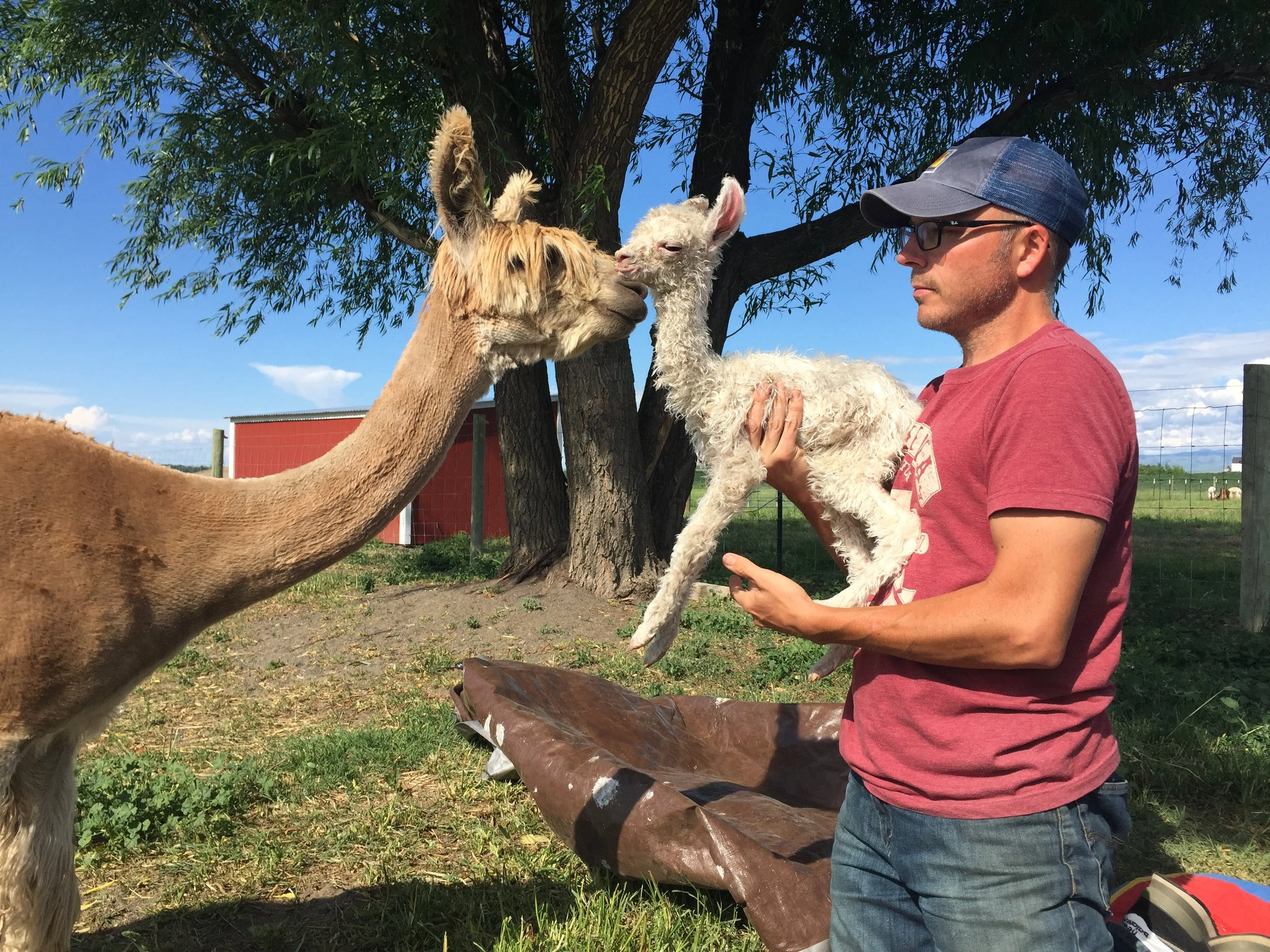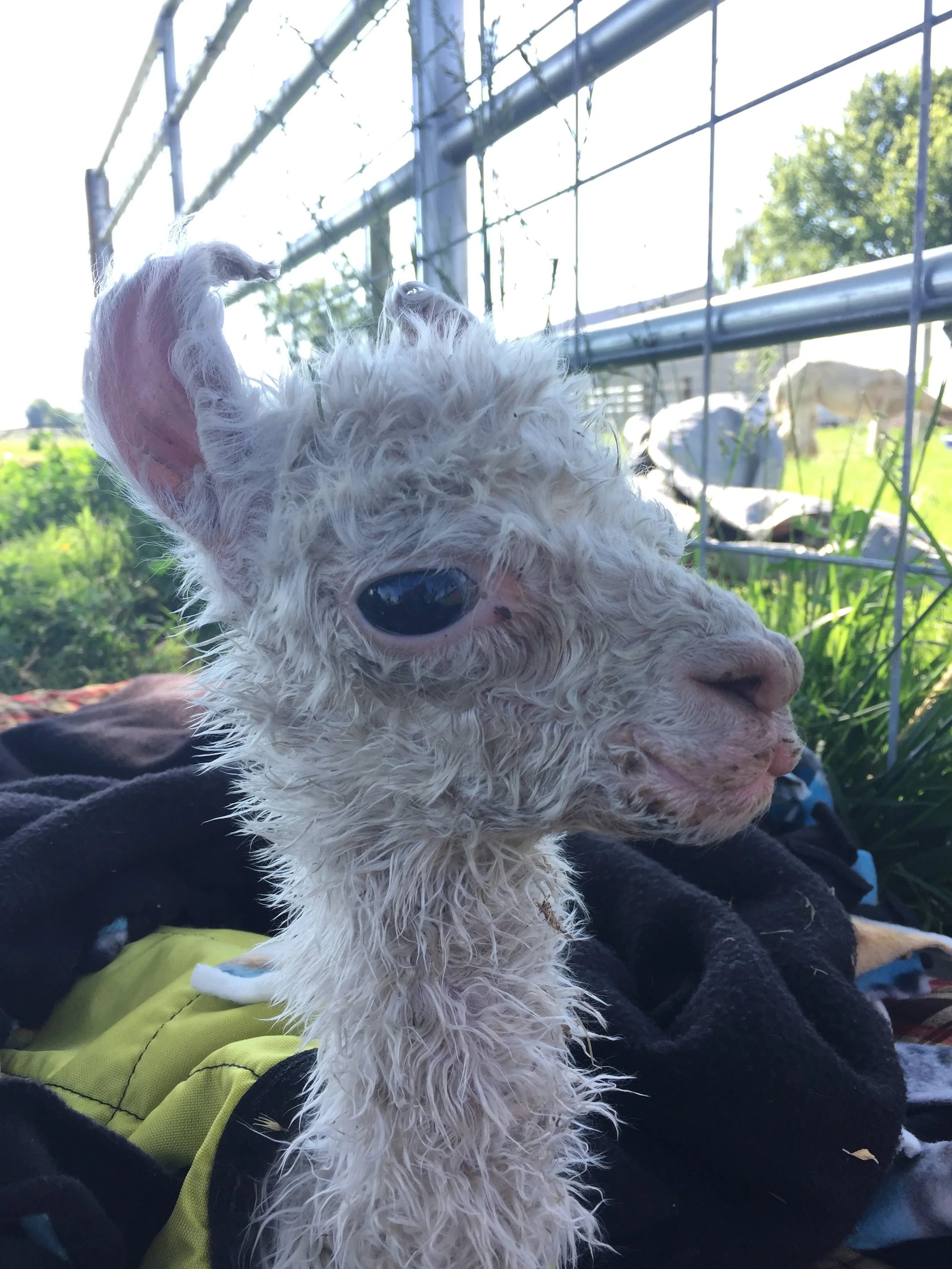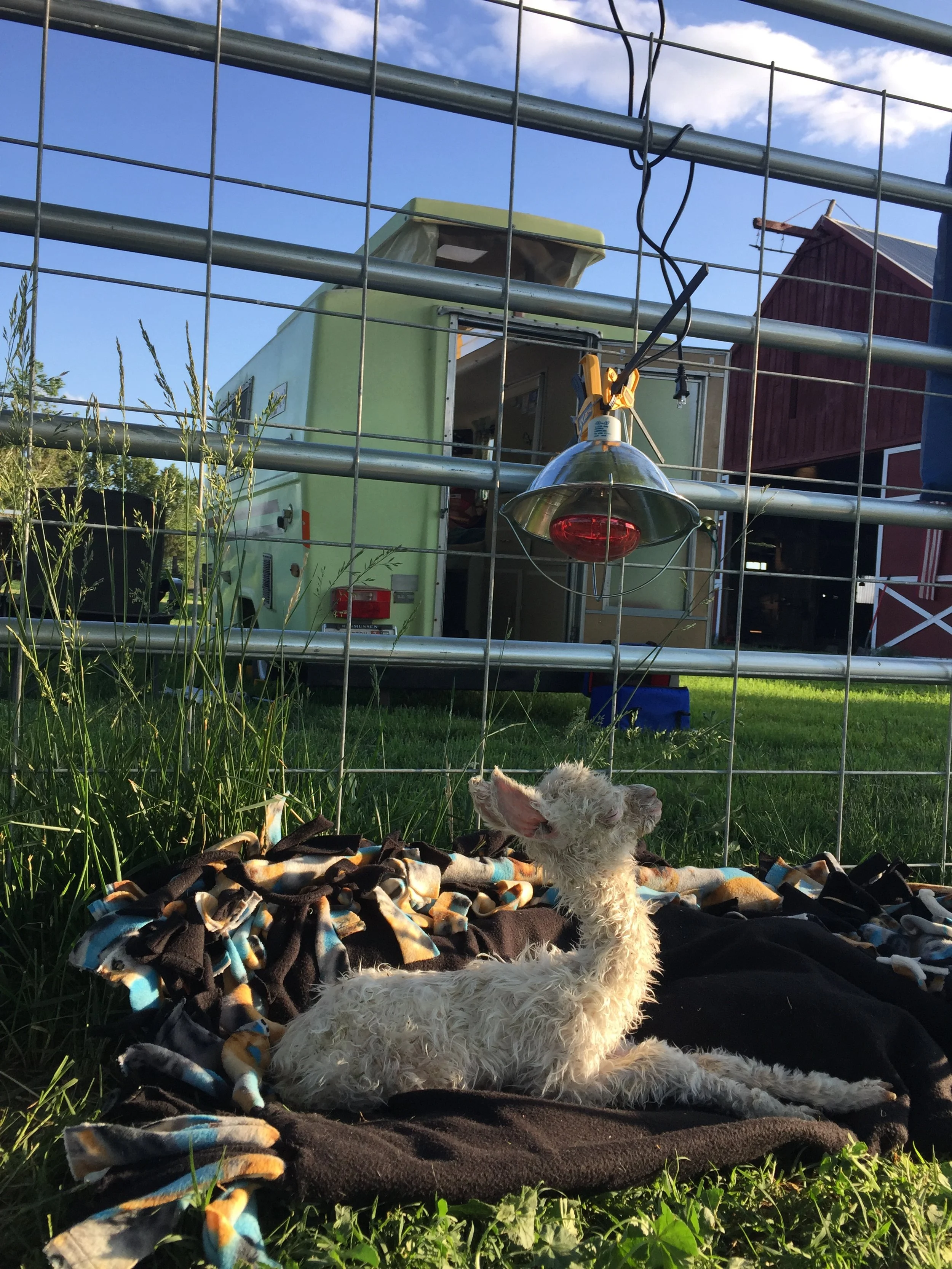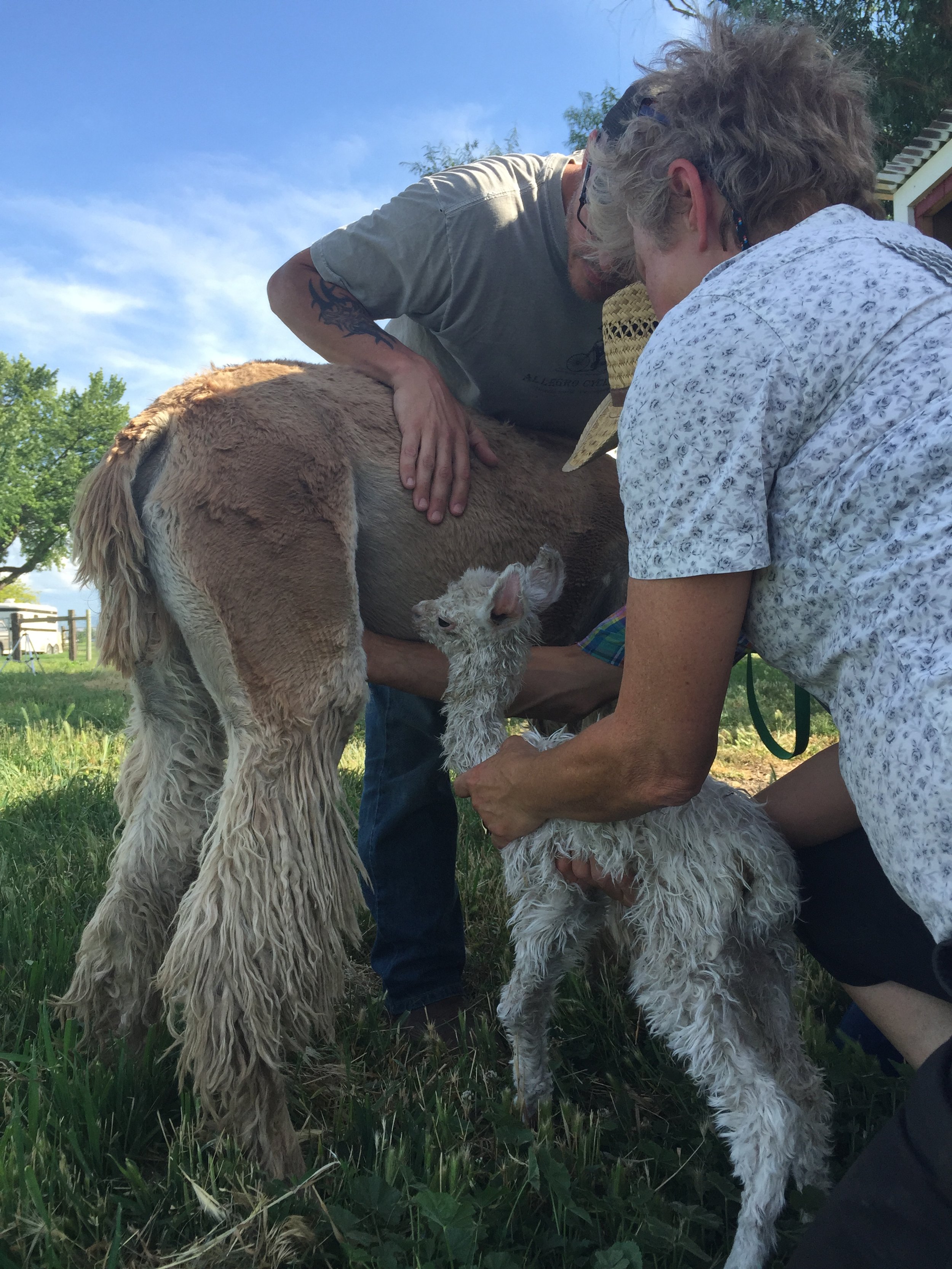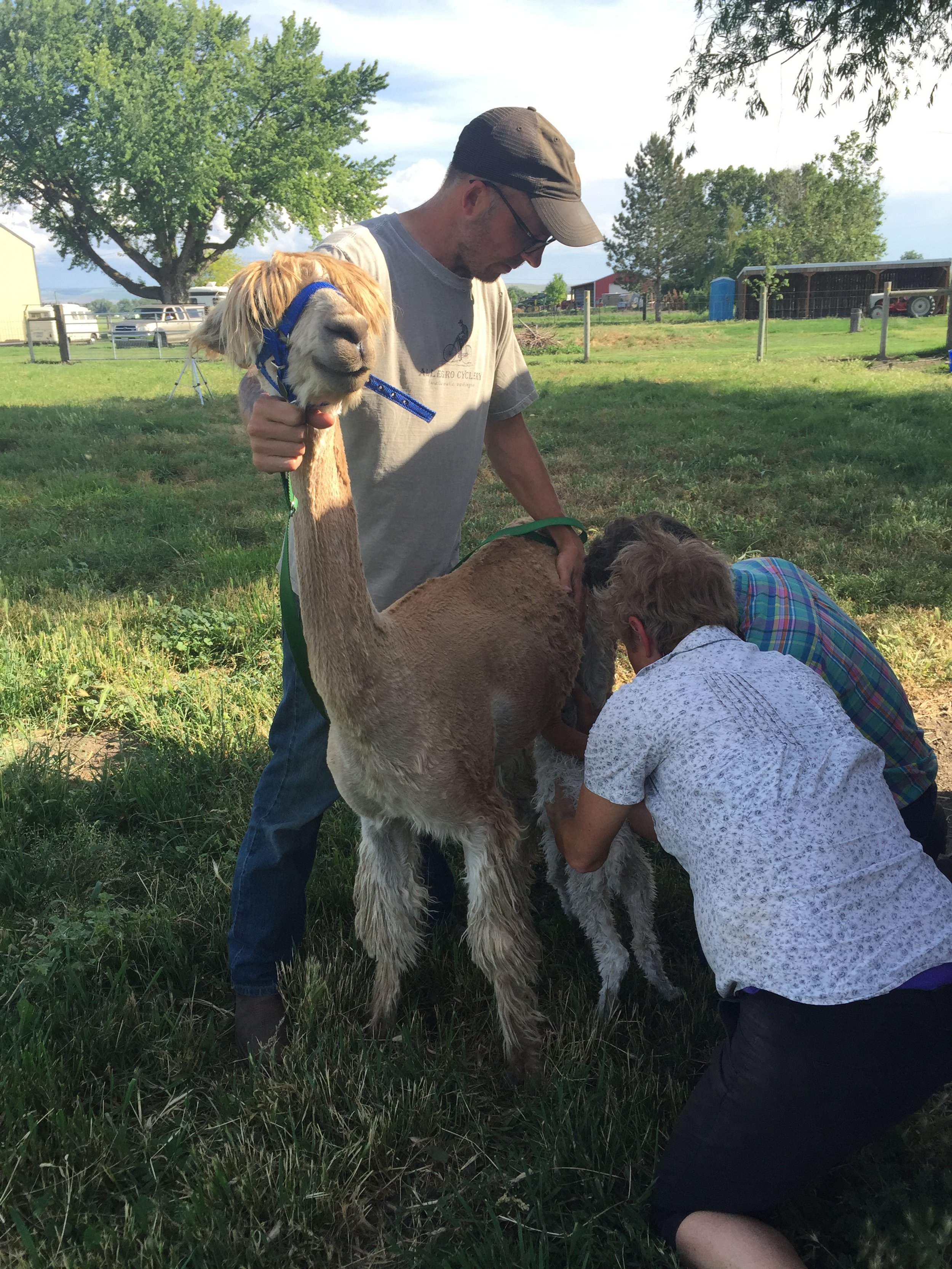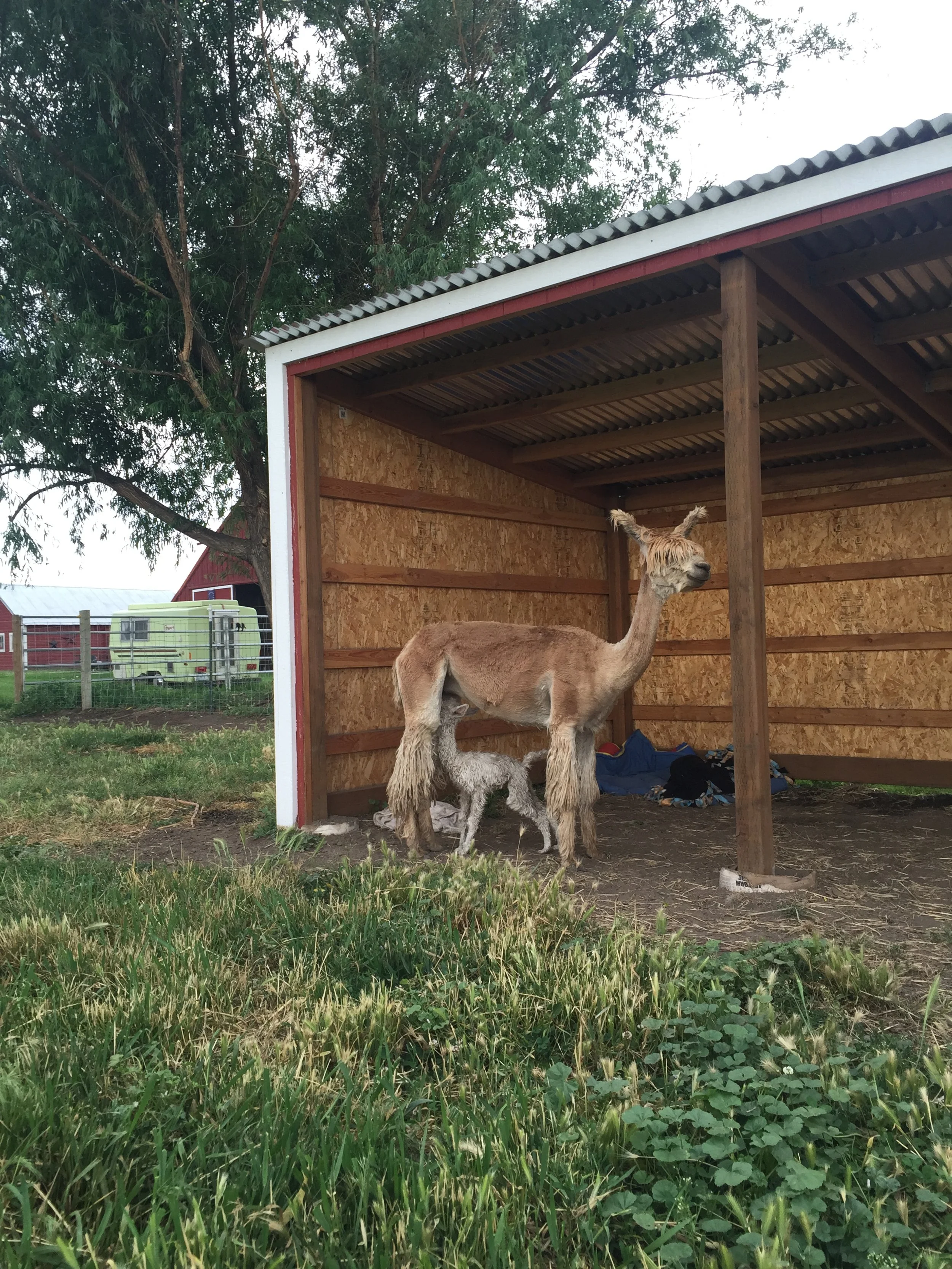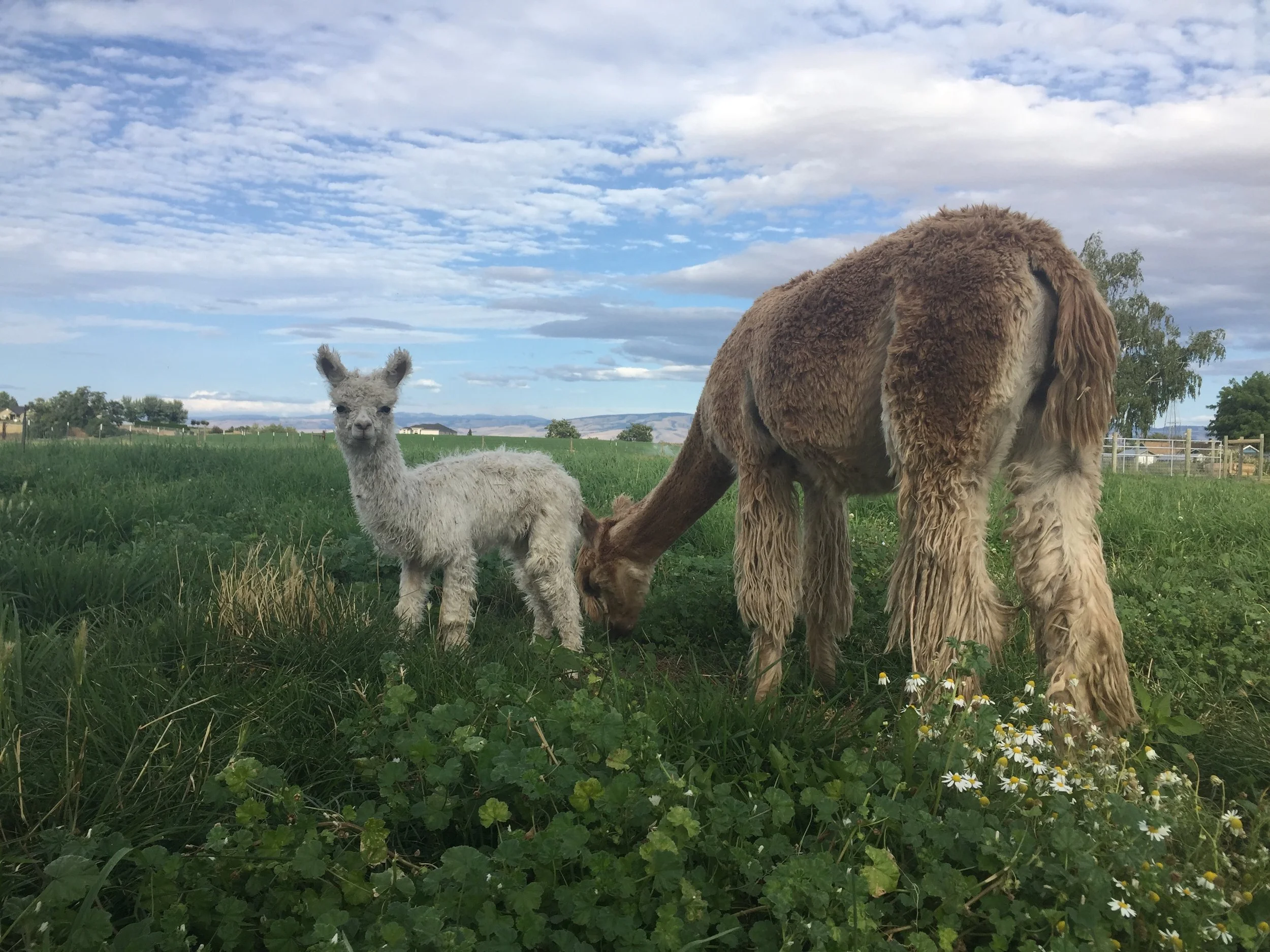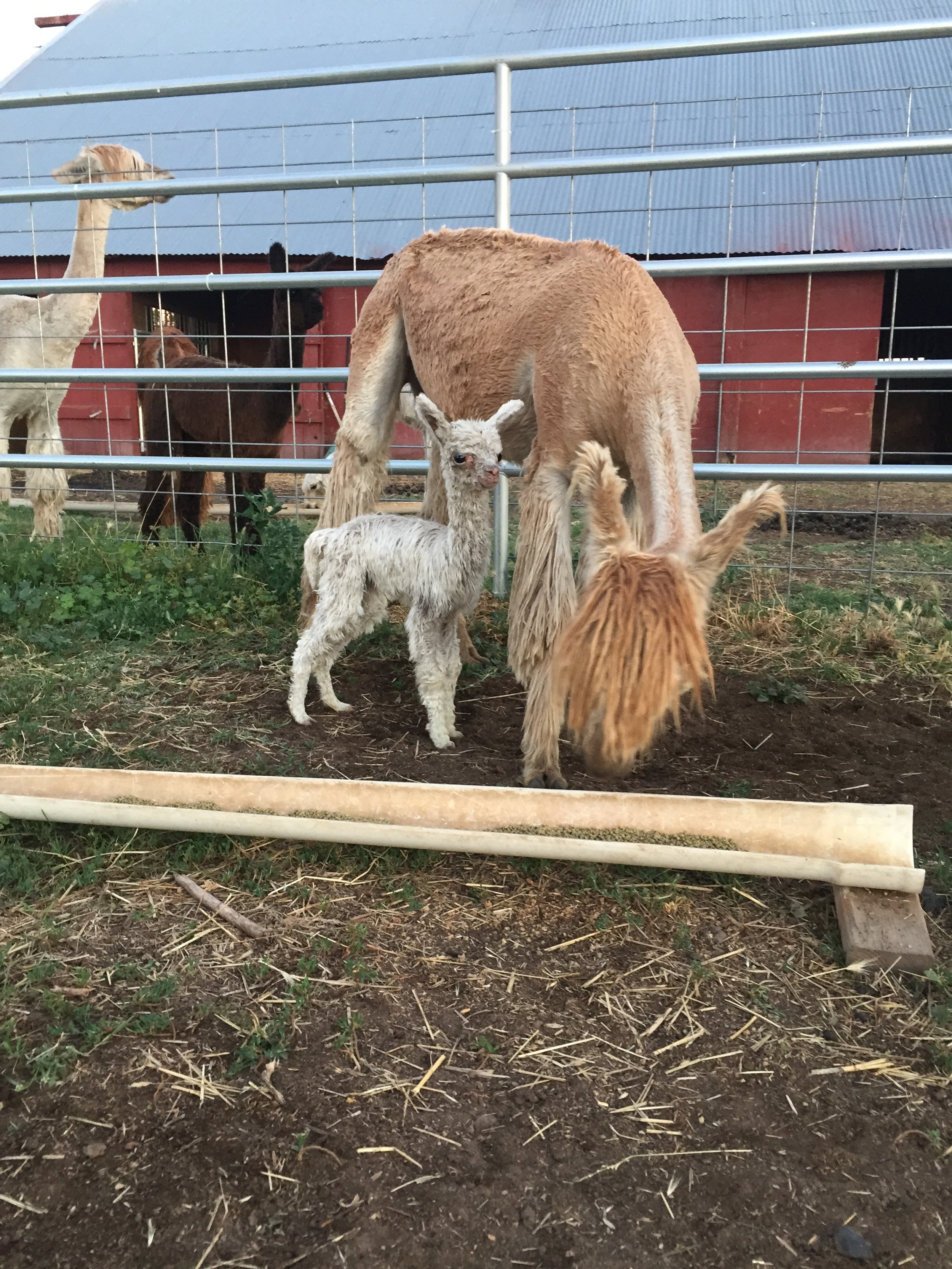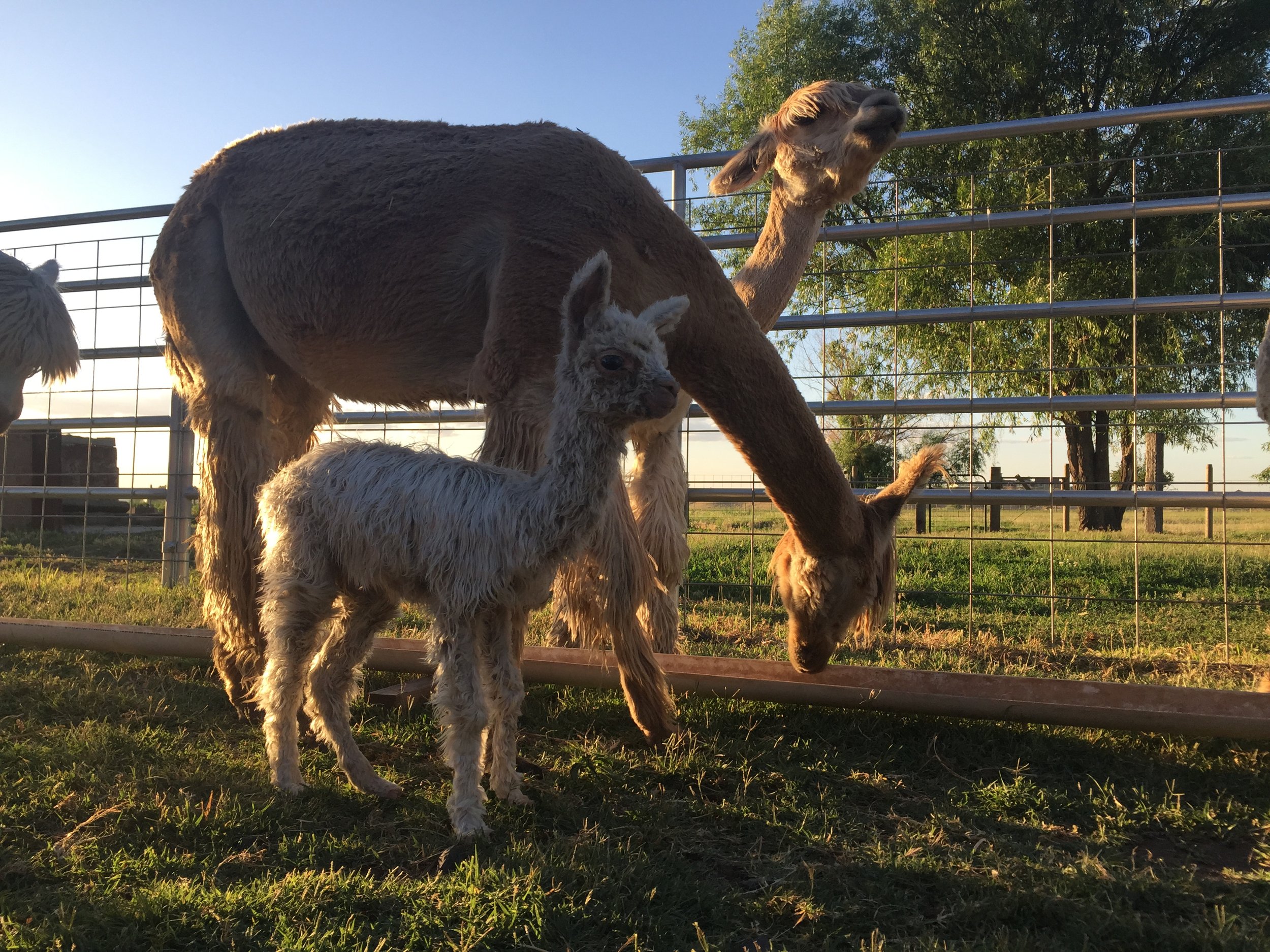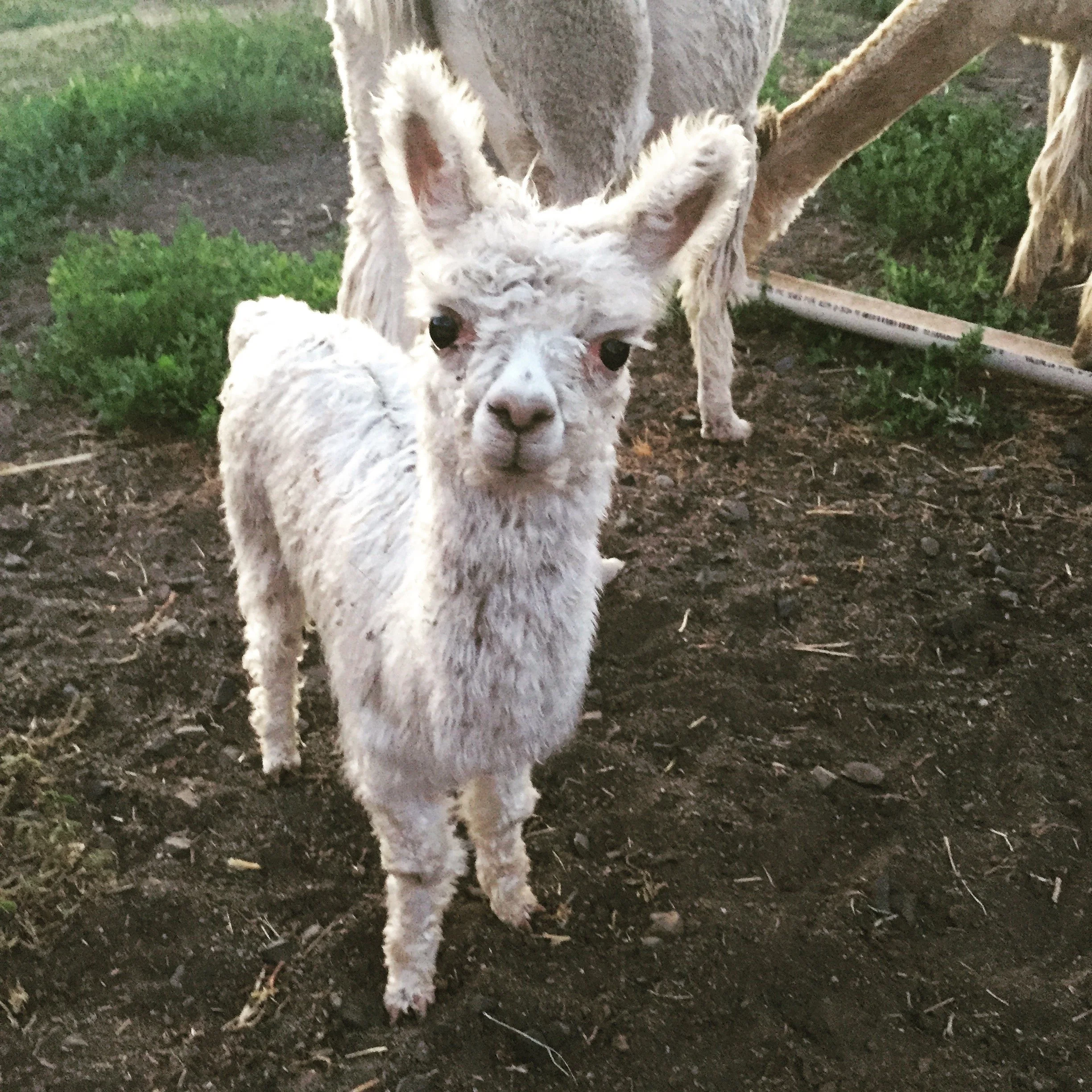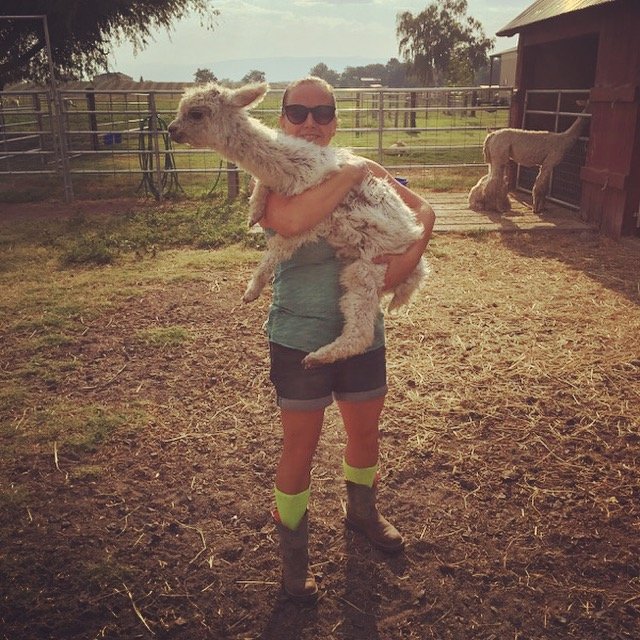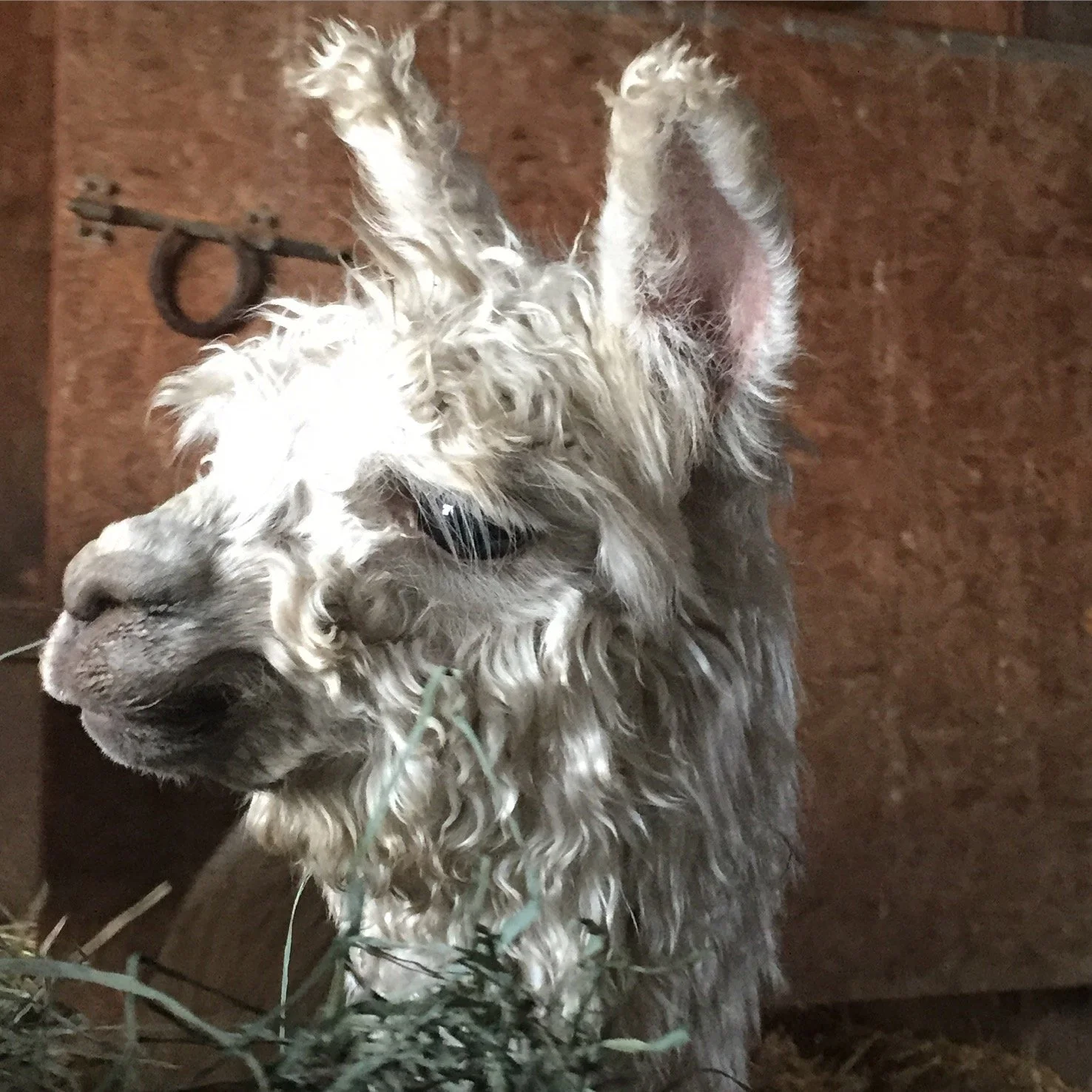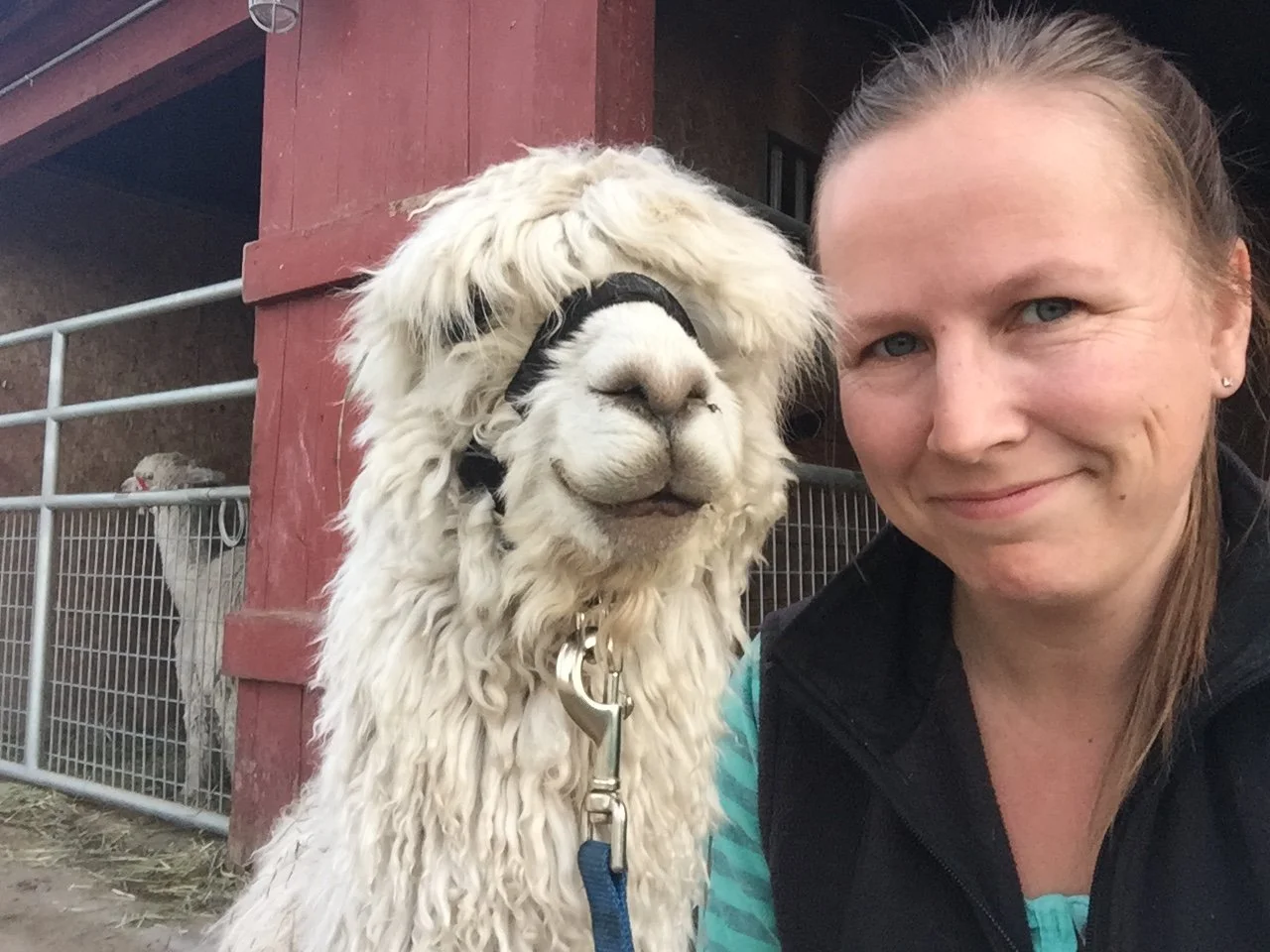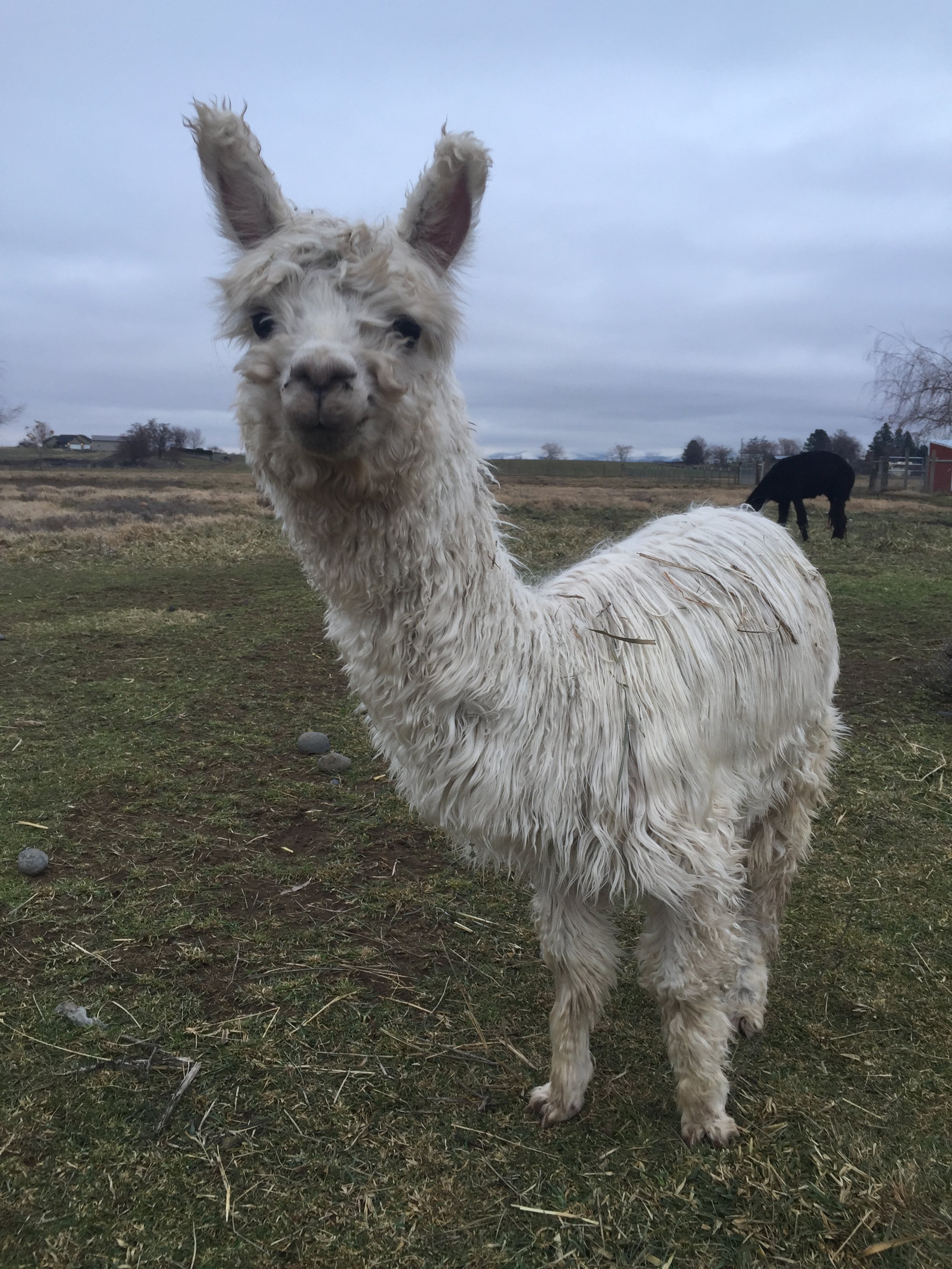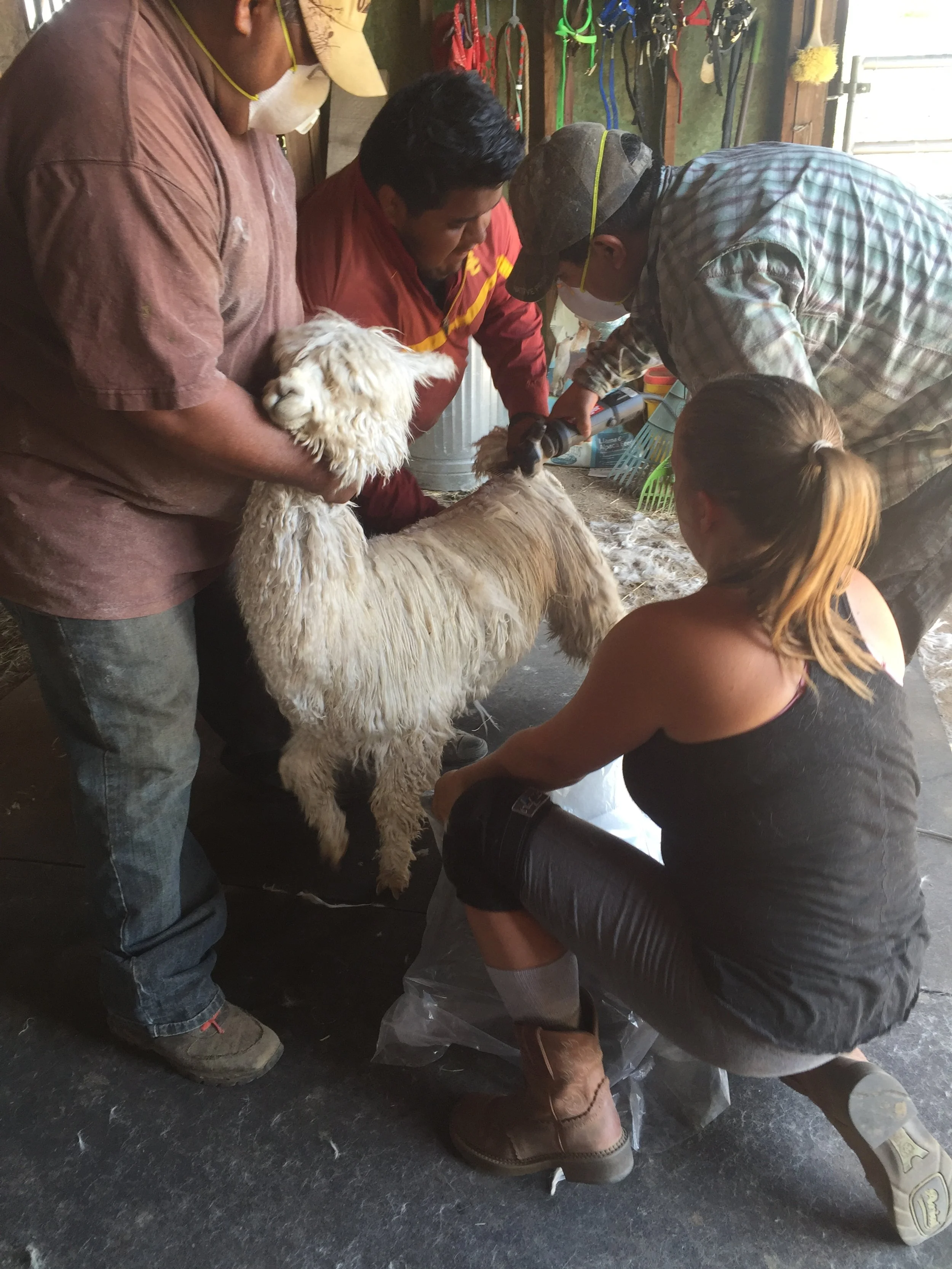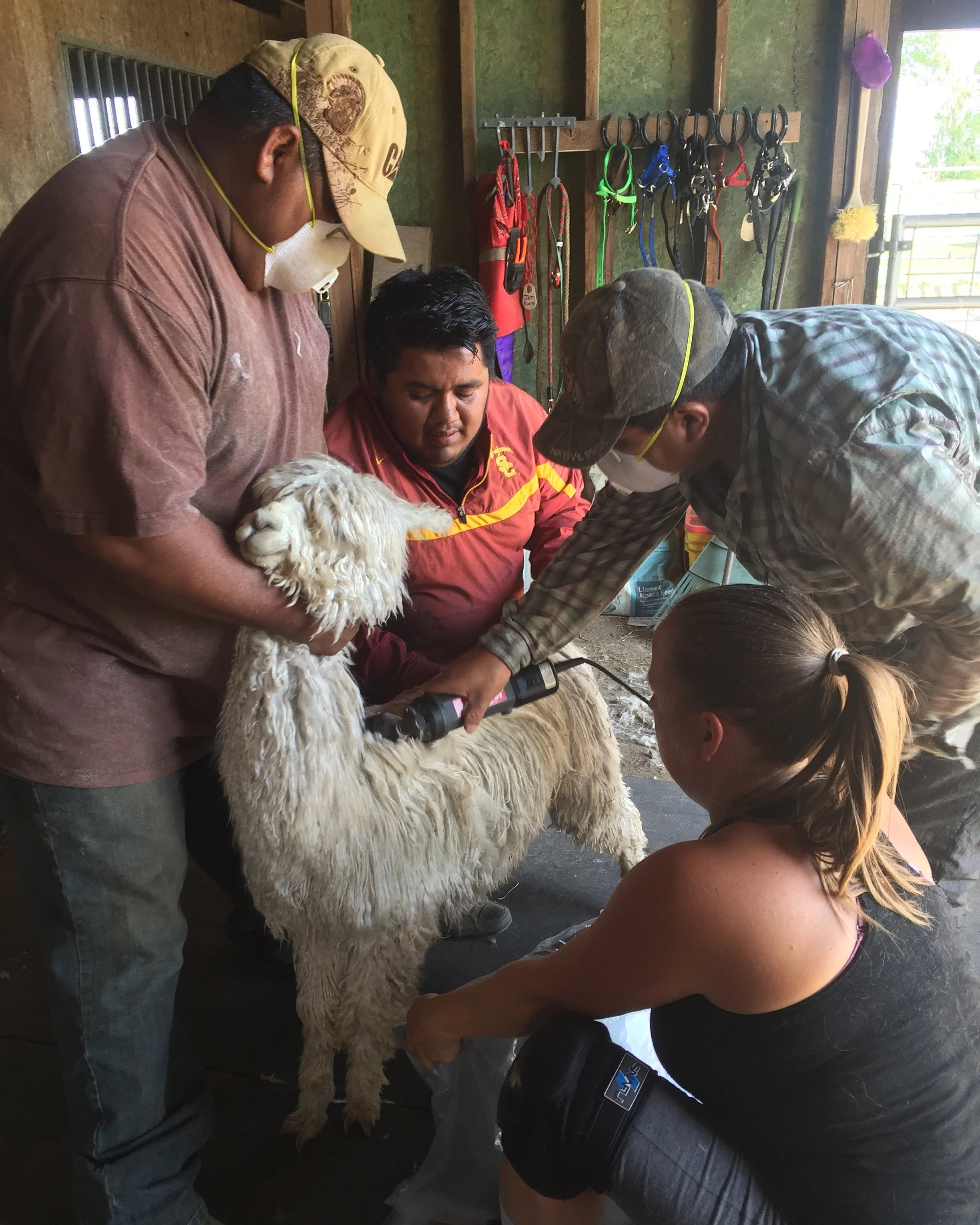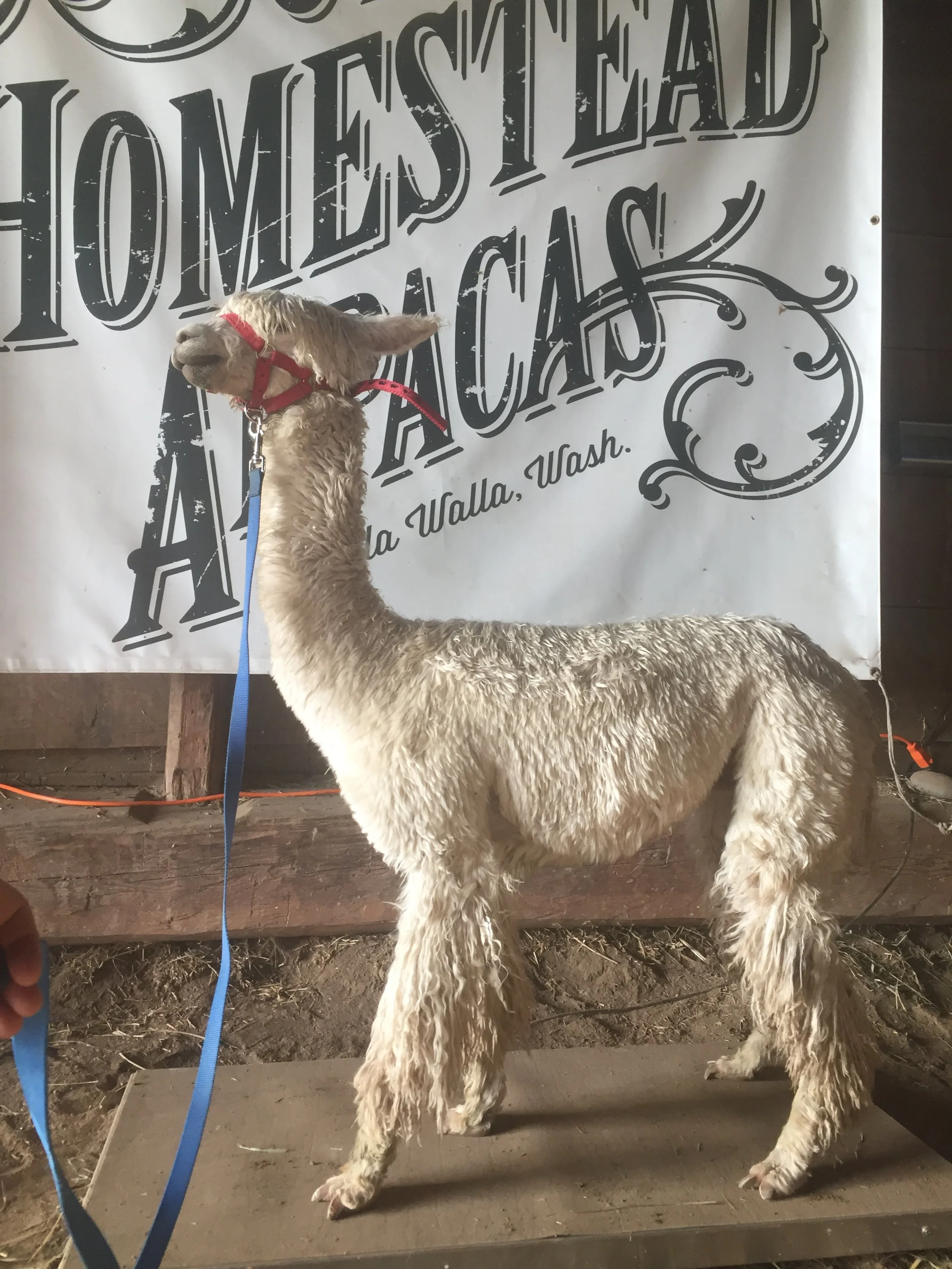Rocky Balboa
We brought our first 3 alpaca to the farm in 2014, back when there were no plans to be a farm in the commercial sense.
They were here to just eat the grass.
And since they were such efficient eaters, we needed more than 3.
“Why don’t you breed a couple — they birth all on their own.”
“It’s easy” they said.
Well the first one that arrived in March 2014 was Indy, and they were right. It was totally easy, she was born all on her own! Up and nursing and running when we came home for lunch to check on everyone.
So we decided to breed my favorite alpaca, Kami, that spring so we’d have another baby in 2015. We were excited to learn she was pregnant for the first time!
Well in the fall of 2014, Kami got really sick. We’re still not exactly sure what happened, we were such newbies then. But we almost lost her.
Miraculously, she pulled through. But that during her 1st trimester so we figured she lost the baby.
Kami slowly rebounded though.
In early May 2015, everyone was shorn. When Kami was on the shearing stand, it was clear there could be no way a baby was in that belly — she was so petite.
Although we were bummed about not having a baby, we were thankful for her survival. We thought perhaps we’d try again the following year.
About 2 weeks after shearing, we noticed Kami rolling around…in the way that mamas-to-be do when the baby is moving into the birth canal.
Could it be?!
Yes, yes it was — Kami was having a baby!
She gave birth normally on 5/24/2015 with relative ease for a first timer. It was a stark white boy! Pretty unexpected considering Kami was light brown and his sire, Placido, was true black!
But that wouldn’t be the only surprise…
We quickly noticed how tiny he was.
Normally, cria (baby alpaca) are between 15 and 18 pounds at birth.
But this little guy? He wasn’t even quite 7!
His ears were completely curled, indicating he was dysmature…but we knew he was full term based on our records.
Aside from the curly ears that made him look a little like an alien…he was really tiny in the short sense.
So short … he couldn’t reach the milk bar. But he also didn’t have the muscle tone or energy to suckle even if he could reach!
We called upon our mentors who instructed us how to insert a rubber tube so that we could feed him. What a delicate procedure that is — to snake it down a squirmy new baby, bypassing the lungs and into his tiny belly.
We managed though. Or should I say, Mike managed that part.
We pulled our tiny camper in front of the barnyard enclosure (aka the Maternity Ward) to “sleep” out there so we could tube fed him every 3 hours for the first 48 hours. We called it Camp Collustrum.
He was tiny, weird looking and feisty as hell.
We put him on an old sleeping bag with a heat lamp to keep him warm in the brisk May evenings.
A few blerry long nights later, we attempted to see if Kami would allow us to assist in nursing him.
Here we had been pawing all over her kid for the first few days, a necessary thing, but something that could easily force this first time mom to disscoiate with the cria.
But luckily she was agreeable. For a few days, we had to help prop him up to her before he grew enough to reach on his own.
Seeing him nurse that first time, that was pure delight and relief!
I hadn’t named him yet…because…you know. But it was clear at this point he needed a name. With the help of a Facebook poll, we landed on the name Rocky Balboa — everyone’s favorite fighter and underdog.
Rocky progressed like a normal cria for the first several months and then he stopped growing vertically. He’s kind of stunted and based on his behaviors & mannerisms, I’m pretty sure he’s either hard of hearing or totally deaf. He also doesn’t appear to have the best vision, either.
But that doesn’t stop Rocky! He holds his own with the big boys.
And he plays an important role on the farm. He’s the “First Friend” new male weanlings make. He’s easy going and not domineering. This helps with the herd dynamic as male weanlings transition from the girl herd to the boy herd.
Rocky might be a lowrider but he’s become a mascot of sorts here on our farm. And he’s a constant reminder that persistence pays off!

